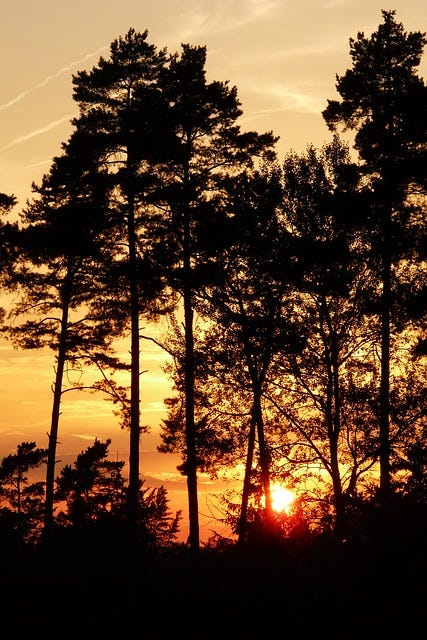Summer Fruits
by Margaret E. Sangster
When scarlet strawberries first were seen
A blush their clustering leaves between,
I thought that never fruit could be
Delicious as the strawberry.
When cherries ripened firm and fine,
The blackbirds shared their feast with mine,
And Summer's sunshine seemed to glow
On satin skin and heart of snow.
When threaded close on slender stems
The currants gleamed like priceless gems;
When peaches held the velvet cheek
The south wind's coy caress to seek;
The loveliest which I could not choose,
Unwilling one fair gift to lose,
Where frost and fire, and old and new,
And night and day, and dusk and dew,
Had blent to tinge the living sap
And shape the cup for Nature's lap.
Now near and far the apple's wealth
Is servitor of joy and health,
And all along the vineyard's line
The purple grapes are sweet as wine,
For He who pledges daily bread,
With bounty hath our table spread.
And as the singing winds go by,
The drifting odors make reply;
And brook and forest, mount and flood,
Chant "Praise the Lord, for He is good."
Margaret E. Sangster's poem "Summer Fruits" beautifully celebrates Nature's bounty. It unfolds through the imagery of various fruits as they ripen and contribute to the beauty and sustenance of life.
The poem opens with the arrival of scarlet strawberries nestled among their green leaves, symbolizing the initial delight and wonder of summer's offerings. With their vibrant red hue, the sight of these strawberries evokes a sense of unparalleled delight and indulgence, suggesting that nothing could be more delicious. This imagery captures the innocence and pure pleasure found in Nature's simplest gifts and invites the reader to imagine these strawberries' sweet, juicy taste and refreshing scent.
As the season progresses, cherries appear. They ripen in the same warm summer sun that the speaker and the blackbirds enjoy, demonstrating the lovely harmony between people and Nature. The cherries, with their firm texture and glowing satin skin, represent the richness and warmth of summer, reminding us of the symbiotic relationship we share with the natural world.
The poem then moves to the currants, described as gleaming like priceless gems on slender stems. This metaphor highlights their beauty and value, akin to precious stones. Following the currants, peaches are introduced with soft, velvety skin, inviting the touch of the gentle south wind. This personification of the wind as coy and caressing adds a tender and sensual quality to the description.
Sangster's inability to choose a favorite among these fruits underscores the diversity and abundance of Nature's gifts. The fruits are products of a perfect blend of contrasting elements: frost and fire, old and new, night and day, dusk and dew. This blending of opposites to create something beautiful and nourishing reflects Nature's intricate and balanced workings.
The poem then shifts to the broader landscape of autumn's harvest, highlighting the wealth of apples and the sweetness of grapes. These fruits, symbolic of health and joy, are seen as servants of human well-being, providing sustenance and pleasure. The mention of grapes, "sweet as wine," alludes to their transformation into a product that symbolizes celebration and community.
The poem reaches its climax in a profound spiritual reflection, attributing this abundant spread to divine providence. The daily provision of bread and the bounty of fruits is viewed as a testament to God's generosity. As the winds carry the fragrances of these fruits, Nature itself seems to sing praises, with every element—brook, forest, mountain, and flood—joining in a chorus of gratitude and reverence. This spiritual aspect of the poem invites the reader to feel a deeper connection with the divine presence in Nature.
Sangster's "Summer Fruits" is a lyrical ode to the natural world, emphasizing its aesthetic beauty and role in sustaining life. The poem encourages readers to appreciate and cherish the myriad gifts of Nature, recognizing them as manifestations of a divine presence that nurtures and provides. Through vivid imagery and gentle rhythms, the poem invites contemplation of the intricate and harmonious processes that bring forth such wonders, celebrating the seamless connection between the earth's bounty and human experience.







